The Imperial Fora were an important center for religion and politics in Rome. Political discussions were held here, justice was administered, and there was also room for education and libraries.
The Imperial Fora, not to be confused with the older Roman Forum, are a series of public squares surrounded by majestic buildings that were constructed between 46 BC and 113 AD. Several emperors added their own forum not just for practical reasons but also to make themselves appear in a more favorable light by freely spending money on public projects.

For many decades, the fora were the center of city life, and important figures gathered here to discuss the economy or expound upon their beliefs about politics or any other hot subject of the era. There was also room for other purposes such as religion, administration, education and even commercial activities.
Via dei Fori Imperiali
Unfortunately, in the 1930s the Italian dictator Mussolini decided to build the Via dei Fori Imperiali, a large triumphal road connecting the Colosseum with Piazza Venezia. The road runs straight through the Imperial Fora, hence a large part of this archeologically highly valuable area is now covered with asphalt. There are now two remaining visible parts of the Imperial Fora, each on either side of the wide boulevard.
Forum of Caesar
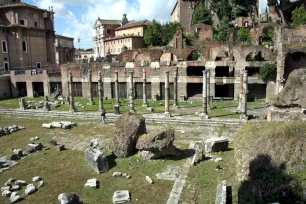
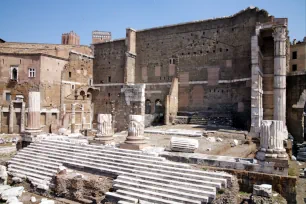
The first of the Imperial Fora – the Forum of Caesar – was actually built as an extension of the Roman Forum. Meant to celebrate Caesar’s great power, this forum also contained a temple to the goddess Venus, as Caesar’s family believed they were directly descended from her. A statue of Caesar himself, on horseback, was placed in front of the temple.
Forum of Augustus
Inaugurated in 2 BC, the Forum of Augustus is said to have been constructed to avenge the death of Caesar, thus, Augustus dedicated the forum’s temple to Mars Ultor or Mars the Avenger. This was a way for Augustus to thank the gods for helping him in his defeat of Caesar’s murderers.
The forum is situated perpendicular to Caesar’s Forum and is believed to have been used as a court of law. It was rectangular in shape with very high walls. Two exedras (semicircular recesses crowned by a half-dome) are believed to have graced the facade of the building. Most of the decorations pertained to the god Mars.
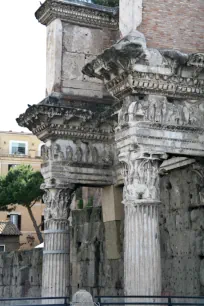
Forum of Nerva (aka The Transitional Forum)
Built by Domitian, this forum served to connect the other two fora together, as well as the Temple of Peace.
The Forum of Nerva was supposed to be dedicated to Minerva – protector of the emperor – but it was inaugurated after Domitian’s assassination, and his successor – whose name was Nerva – dedicated it to himself. You can still see a relief of Minerva on the attic, supported by two Corinthian columns. Because of where it was built, it is rather narrow, and its large entrance tended to serve as an access way to all the other fora.
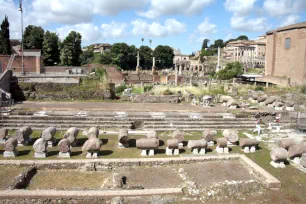
Forum of Peace
The Forum of Peace consisted of a large open space surrounded by colonnades. On one side, opposite the entrance, stood the Temple of Peace. The temple was built to celebrate the conquest of Jerusalem. Spoils of war such as the seven-branched candelabrum and the silver trumpets taken from the temple in Jerusalem were stored here.
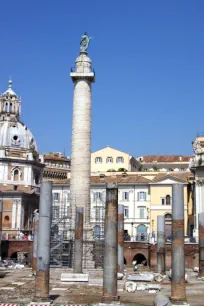
Forum of Trajan
The largest and greatest of the Imperial Fora, Trajan’s Forum was built after the conquest of Dacia (now Romania). Much excavation had to be done to complete this forum, which consisted of several parts: a public square, a large temple (the Temple of Divius Traianus), two libraries and the immense Basilica Ulpia, which measured about 60 by 170 meters (197 x 558 ft.) in size. For some time, this particular civic building moved the center of political life from the Roman Forum to the Imperial Fora. Many of its marble columns still stand today.
The forty-two meter-tall (138 ft.) Column of Trajan, located between the Basilica Ulpia and the Temple of Trajan, indicated the exact height of the hill that was excavated for the construction of the forum. Adjacent to the large forum was Trajan’s Market, a semicircular warehouse complex annex stores.
Layout of the Fora

- 1. Temple of Trajan
- 2. Column of Trajan
- 3. Basilica Ulpia
- 4. Forum of Trajan
- 5. Markets of Trajan
- 6. Temple of Venus
- 7. Forum of Caesar
- 8. Forum of Augustus
- 9. Temple of Mars
- 10. Forum of Nerva
- 11. Temple of Nerva
- 12. Forum of Peace
- 13. Temple of Peace

